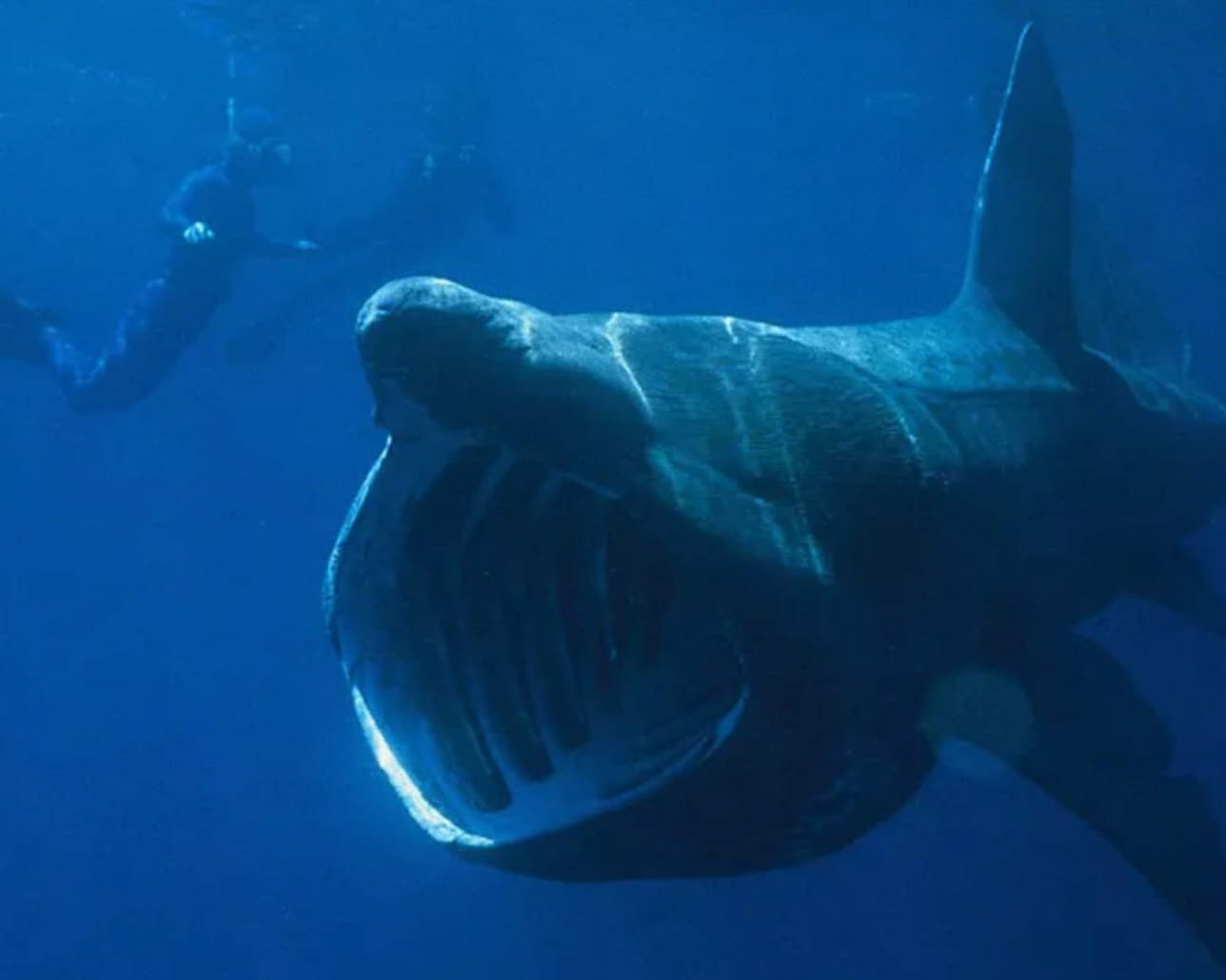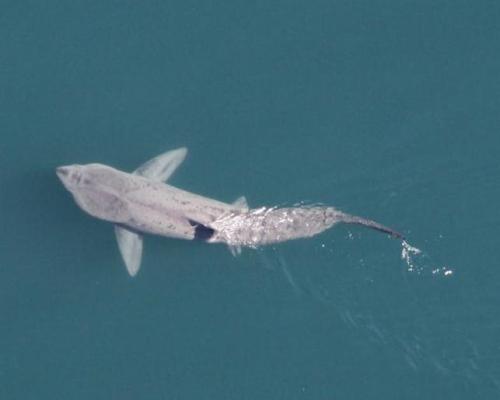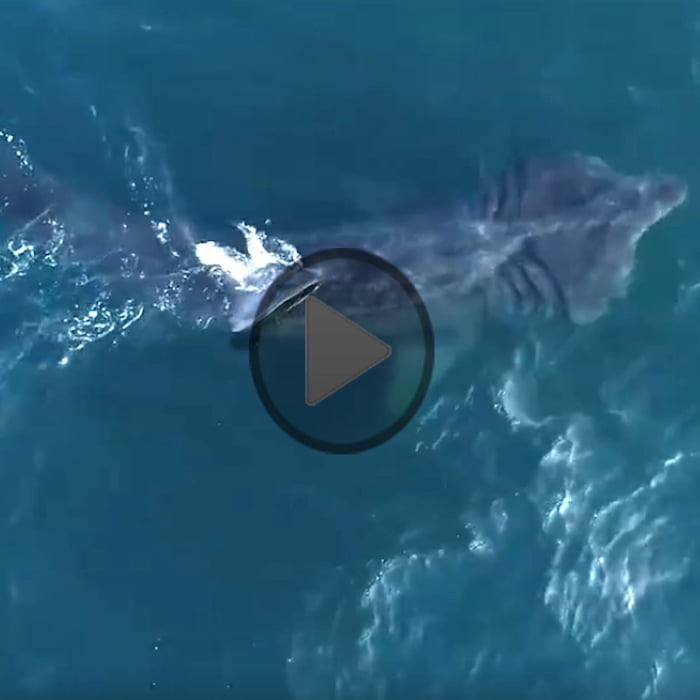
Distribution:
Common in oceans around the world save
for the coldest Arctic and Antarctic waters .
Ecosystem:
Coral reefs at all depths, continental margins,
shelf environments, hydrothermal vents .
Feeding Habits:
Opportunistic Feeder .
Taxonomy:
Families Galatheoidea and Chirostyloidea;
Class Malacostraca
Overview and Physical Characteristics
Basking sharks are one of the largest fish species, second only to the whale shark. Growing as long as 40 feet (12.192 meters) and weighing over 5 tons (5000 kilograms), basking sharks can be sighted swimming close to the surface with their huge mouth open wide, scooping up plankton. Though they have a streamlined body of a shark, they are generally passive and pose no danger to humans, although their sheer size and thick muscular tail should be respected by divers, as should their rough skin, which can easily cause abrasions.
Habitat and Distribution
The basking shark (Cetorhinus maximus) is a large cosmopolitan migratory species that prefers cooler waters. They may be found in all the world’s temperate and boreal waters oceans in both Northern and Southern Hemispheres.
While basking sharks are usually spotted feeding near the surface, they also can also dive to significant depths, having been recorded at depths of over 3,000 feet (1 kilometer). Migrating from one area to another, basking sharks seek out the most abundant sources of plankton. Not much is known about their migration routes, but they can travel significant distances: a tagged female basking shark was once tracked travelling across the Atlantic from the British Isles to Newfoundland, a total distance of nearly 6,000 miles (9,589 km).
Ecosystem
Basking sharks play a significant role in their ecosystem. First and foremost, as filter feeders, they regulate plankton populations. By consuming plankton, they incorporate nutrients into their tissues, and these nutrients are released back into the marine environment when they defecate or die. They are also a prey source for predators such as killer whales and large sharks. By monitoring populations of basking sharks, scientists can assess the overall health and stability of a marine ecosystem.
Feeding Habits
The name basking shark comes from the perception that these fish spend most of their day just floating in the sun near the ocean’s surface. However, appearances can be deceiving. What is observed as “basking” is actually the shark hard at work feeding, spending several hours a day filtering seawater through its gills, consuming clouds of plankton which are most abundant in surface waters. As a filter feeder, a basking shark can filter up to 4 million pounds (1814 metric tons) of water every hour.
Behavior and Reproduction
Basking sharks are solitary except during mating season, which is generally during the spring and summer months. The warmer months coincide with an increase in plankton abundance in the coastal areas and oceanic convergence zones where basking sharks are known to congregate. Not much is known about their actual reproductive habits, but it is assumed that basking sharks are ovoviviparous, which means that shark embryos develop within eggs inside the female’s body before being born live. The basking shark has an exceptionally long gestation period of 2-3 years – one of the longest of any animal – which allows it to produce large, well-developed offspring prepared for independent life after birth.
Visual System and Communication
The relatively small eyes of the basking shark, positioned laterally on their head, suggests their eyes may not be their primary sensory organ. It is likely that they rely on other senses such as smell and electroreception to detect prey and navigate their surroundings.
Conservation Status
Basking sharks are listed as vulnerable by the International Union for Conservation of Nature (IUCN). In the past they were hunted for their oil, meat, fins, and vitamin-rich liver. Today most fishing has ceased except in China and Japan. But basking sharks are naturally curious and often investigate unfamiliar objects in their environment, which can lead to boat strikes. Their extremely long gestation period, slow growth to maturity (6-13 years), and habitat degradation due to pollution all contribute to the basking shark’s endangered status.
Fun Fact
Basking sharks are experts in energy conservation. Swimming slowly near the surface of the water with their dorsal fin exposed, they filter water and consume plankton with a minimal expenditure of energy.
Basking sharks and BOEM
Populations of whale sharks have been in dramatic decline. To ensure that BOEM-authorized activities don’t contribute to this decline, this summer BOEM is collecting data on the spatial and behavioral ecology of whale sharks near offshore energy operations. Researchers will use satellite tags and sensors like accelerometers, (glorified Fitbits for fish) to gather information how they use their habitat, enabling us to recreate a day in the life of a whale shark long after they disappear from view. BOEM staff will synthesize data from this study with existing research to help determine potential risks to the species.
For more information on this study, visit: Mortality Risk for Whale and Basking Sharks During Energy Operations.
For more information
- Sharks Should be Respected, Not Feared (U.S. Fish & Wildlife Service)
- We’re gonna need a bigger boat: gentle giants return to Channel Islands National Marine Sanctuary (NOAA National Marine Sanctuaries)
- Tagging Reveals Secrets of Southern California’s Largest Sharks (NOAA Fisheries)
- Basking Sharks Gather in Large Groups off Northeast U.S. Coast (NOAA Fisheries)
This story is part of the “Unleashing the Science” series, showcasing how bureaus within the Department of the Interior produce and apply science to ensure responsible management decisions for our planet now and for the future.
--BOEM--
The Department of the Interior’s Bureau of Ocean Energy Management (BOEM) manages development of U.S. Outer Continental Shelf (OCS) energy, mineral, and geological resources in an environmentally and economically responsible way.




